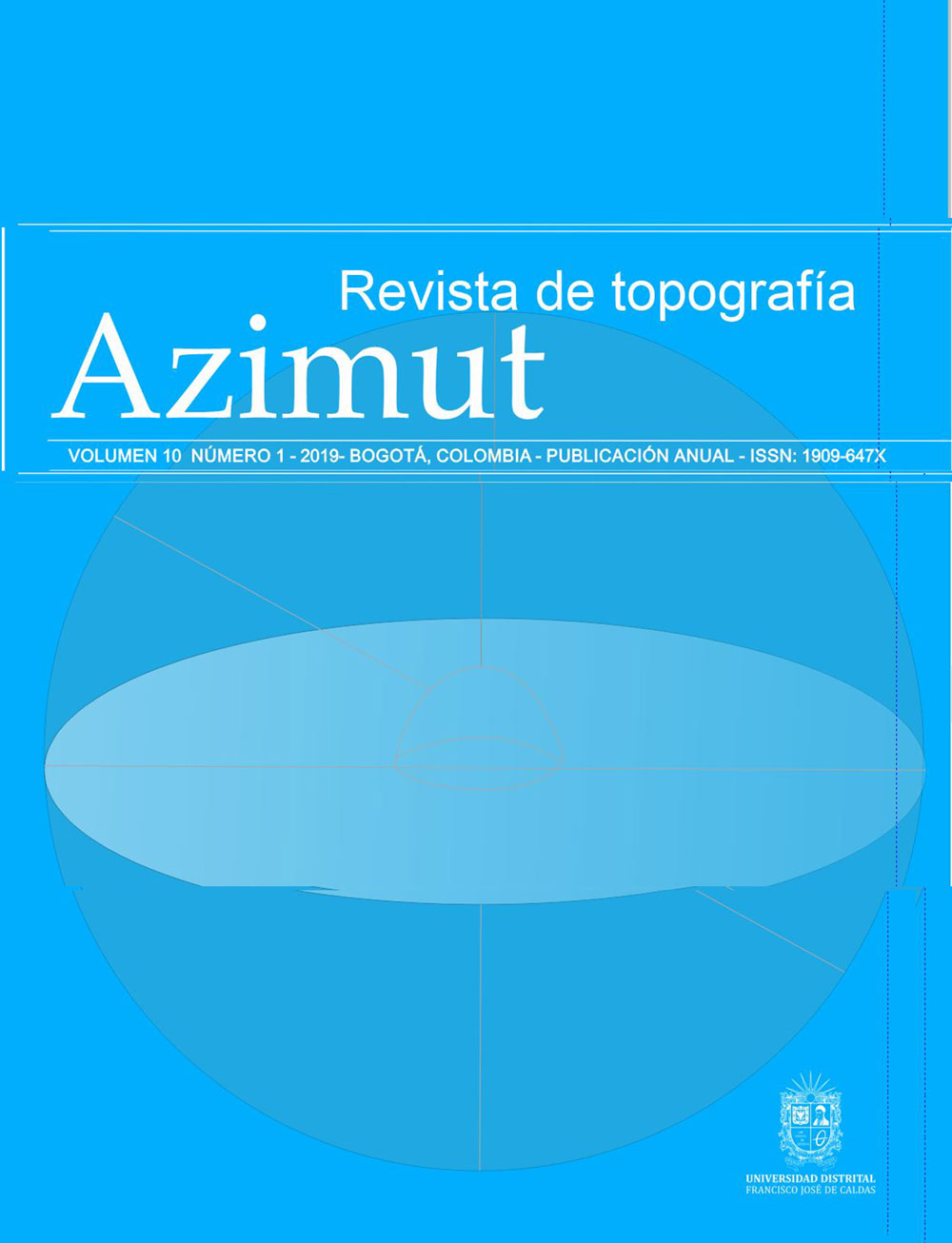Publicado:
2019-06-12Número:
Vol. 10 Núm. 1 (2019)Sección:
ArtículosAnálisis de parámetros biofísicos a partir de información multiespectral. Caso arroyo Corto y arroyo Pescado. Argentina
Analysis of biophysical parameters from multispectral information. Case Arroyo Corto and Arroyo Pescado. Argentina
Descargas
Resumen (es)
La teledetección es una herramienta que proporciona las medidas necesarias para el cálculo global del riesgo de estrés térmico e hídrico. Este tipo de instrumentos son importantes en las amplias llanuras templadas del sudoeste bonaerense donde, los cultivos son más afectados por la variación estacional de las temperaturas. El conocimiento de esta es, entonces, de vital importancia para lograr buenos resultados en los rendimientos de los cultivos. El área de estudio corresponde a la cuenca del arroyo Corto y Pescado en el sudoeste bonaerense. El objetivo del trabajo es estimar las variables biofísicas que llevan a la determinación de situaciones de estrés. Se calculó la variación estacional del NDVI y NWDI a partir de imágenes Landsat 8 OLI. Se obtuvo, además, la temperatura de superficie. Se calculó además el índice de estrés hídrico (temperature dryness vegetation index, TDVI) que combina la temperatura de superficie e índice de vegetación. De acuerdo con este, la cuenca presenta un déficit alto en las cuatro estaciones, sobre todo en otoño, invierno y primavera. El sector central del área de estudio presenta una leve mejora en cuanto al déficit en la primavera. Existe un déficit alto y moderado en la gran mayoría de los cultivos.
Resumen (en)
Remote sensing is a tool that provides the necessary measures for the global calculation of the risk of thermal and water stress. This type of instruments are important in the broad temperate plains of the southwest of Buenos Aires, where crops are more affected by the seasonal variation of temperatures. The knowledge of these, then, Of vital importance to achieve good results in the yields of the crops. The study area corresponds to the basin of the Corto and Pescado stream in the southwest of Buenos Aires. The objective of the work is to estimate the biophysical variables that lead to the determination of stress situations. The seasonal variation of NDVI and NWDI was calculated from Landsat 8 OLI images. The surface temperature was also obtained. It was also calculated the water stress index (TDVI) that combines the surface temperature and vegetation index. According to this, the basin has a high deficit in all four seasons, especially in autumn, winter and spring. The central sector of the study area shows a slight improvement in terms of the deficit in the spring. There is a high and moderate deficit in the vast majority of crops.
Cómo citar
APA
ACM
ACS
ABNT
Chicago
Harvard
IEEE
MLA
Turabian
Vancouver
Descargar cita
Visitas
Descargas
Licencia

Revista de Topografía AZIMUT is licensed under a Creative Commons Reconocimiento-NoComercial-SinObraDerivada 2.5 Colombia License.

